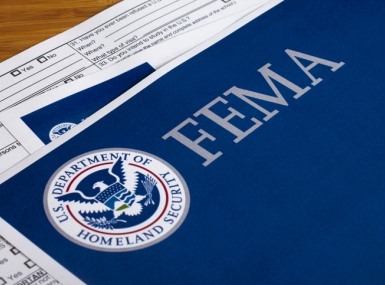Natural Disasters: Not a Sprint — a Marathon
Author

Erika Philpot

Rose Winkeler
Upcoming Events
Related News

Key Takeaways
Summer in the western United States is wildfire season. In a mountain community, a wildfire is threatening homes, residents are preparing for possible evacuations and a plume of smoke hovers ominously over neighborhoods. Residents stand in the streets taking photos with their cell phones and gaze up at the mountain, while a somber air show takes place as planes and helicopters tirelessly fight the blaze. The county jumps into action, activating and supporting an Emergency Operations Center (EOC), a Command Post and fire-suppression activities.
Designated employees across the county leave their regular positions to take assigned roles in the EOC where they offer their knowledge, skills and abilities to the effort.
Other employees step up to cover the vacancies left in departments, ensuring ongoing operational coverage while allowing their colleagues to fully engage in the EOC and response activities without distraction.
Neighboring jurisdictions and community partners also assist in the fight to keep the citizens and their homes safe during this natural disaster.
While certain departments, such as Emergency Management, the Sheriff’s Office and Public Works are obviously needed in responding to a natural disaster, they are not alone in supporting the county’s emergency response: IT supports the technological infrastructure of the EOC, GIS makes numerous maps of the fire area as it evolves, Finance tracks expenses to assure state and federal funding, Public Affairs keeps the public informed and HR calculates overtime.
Within days, the fire is no longer a threat, but the danger of monsoon flooding emanating from the fire scar is high and ever present. The County Flood Control District leads these efforts by immediately assessing the flood risk and implementing mitigation measures while others at the county keep citizens informed via press releases and social media, work with non-profits to set up volunteer stations and go door to door to inform citizens.
A natural disaster is not a sprint; it is a marathon. In the case of flooding following fire, the threat of rain and flooding will last for quite some time. Here are several human resources items to consider when working with your Emergency Management department and preparing for a natural disaster:
First, have policies in place that address how people will receive overtime or straight time for working long hours during an emergency. Will staff in the EOC or others receive overtime? Will exempt staff receive straight time? If so, then ensure this functionality exists in your timekeeping software and is tested prior to the emergency. Also, identify how the organization will track natural disaster expenses. Have training and resources materials established ahead of time. How will emergency shifts be adjusted and what impact might this have on shift differential? Will anyone receive standby or on-call pay? If other jurisdictions are working together, side by side, then does each have a similar pay policy or will some workers perceive inequity?
Second, cross-training is the key to operational coverage. Flooding can occur days, weeks or months after a fire event. Employees in the EOC or Command Center could be activated and demobilized multiple times. They will need back up to ensure they can work shifts or rotations. Also, departments will need cross-training to complete the work of the employees working at the EOC. Desk manuals are important resource guides, as employees in the EOC are too busy to answer day-to-day departmental questions. Identify how temporary agencies and partners can assist.
Third, a wide variety of expertise is needed. HR will support the emergency efforts by identifying staff who are able to assist with specific skill sets. If an emergency declaration is needed, then the County Attorney’s Office’s assistance will be needed. As the Board will be involved in the outreach and will attend briefings at the EOC, each event where a quorum may take place will need to be posted according to public meeting law. If a quorum of the Board is present, then the Clerk of the Board will need to take minutes. Translation services may be needed for translation of press releases, social media, community meetings and door-to-door communications. Facilities staff may need to set up temporary facilities, arrange a volunteer center or community meeting or deal with a county building within the path of the natural disaster. A Government Relations Office will coordinate site visits from outside elected officials and government representatives. Additional employees may be called upon to assist due to their organizational skills, writing skills, communication skills or accounting skills to meet a specific workload.
Fourth, employee assistance programs and counseling may need to be brought in as employees deal with heightened stress, fear and exhaustion. These employees are not just dealing with the work of the emergency response; many of them may also be personally concerned for their own safety, the impact of the fire or flood on their own homes or those of family members. Communication may break down as employees work under stress and deal with uncertainty. Frequent communication, maybe in the form of a global email, can keep staff on the same page and lessen anxiety. Some employees may need to take leave to prepare for evacuation or assist others.
Whatever the emergency, from fires and floods to earthquakes, hurricanes, tornados and landslides, counties answer the call to help. Many employees across many departments are needed to assist in the ONE COUNTY response. Human Resources supports the emergency response by supporting employees and making sure they have the resources to not only do their jobs but to feel supported as part of the county family.
To all the public servants and first responders who preserve community, keep neighbors safe and help when the need is greatest, thank you.

Attachments
Related News

States file lawsuit challenging FEMA’s new rules on emergency management grants
On November 4, a coalition of 12 states filed a lawsuit against the U.S. Department of Homeland Security (DHS) and the Federal Emergency Management Agency (FEMA), alleging that recent changes to key emergency management grants are unlawful and could disrupt state and local preparedness efforts.

County Countdown – Nov. 4, 2025
Every other week, NACo's County Countdown reviews top federal policy advocacy items with an eye towards counties and the intergovernmental partnership.
FEMA bill staffers offer insights into reform effort
NACo Intergovernmental Disaster Reform Task Force heard from staffers who helped shape a bill that would make dramatic changes to the Federal Emergency Management Agency.